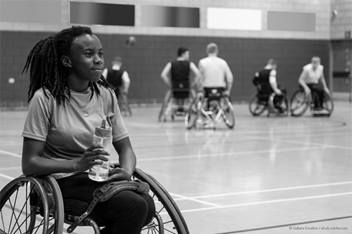New Guidelines: Sports and Energy Drinks
Sport and energy drinks are common fluids that children and adolescents reach for before, during and after physical activity. However, most people are not aware that there is a difference between the two types of drinks.
While sports drinks can be beneficial in certain circumstances, energy drinks really have no useful role in the diet of young athletes. When used inappropriately both sport and energy drinks can be more harmful than helpful. Unfortunately energy drinks often target children and adolescents advertising that by drinking them you can “increase your energy, decrease fatigue, and enhance concentration and mental alertness.”
Sports Drinks
Sport drinks are beverages that contain nutrients that are often lost during vigorous exercise. Because one of those nutrients is sugar, however, they are not made to be consumed during meals or snacks as a replacement for water or low-fat milk as over-consumption of these beverages can lead to weight gain and tooth decay.
Sports drinks can play an important role in an athlete’s recovery if the athlete is engaged in prolonged vigorous physical activity but the American Academy of Pediatrics (AAP) recommends that sport drinks not be consumed after participating in short training or competition sessions.
A good rule of thumb is to save sports drinks for exercise that lasts for more than an hour or that takes place in very hot or humid conditions.
Energy Drinks
In addition to sugar, energy drinks contain substances that include nonnutritive stimulants claiming to boost energy.
The main stimulant in an energy drink is usually caffeine. While caffeine does help to energize the body temporarily, it does not replenish the nutrients that are lost during prolonged physical activity. In fact, caffeine is a diuretic, meaning it actually depletes water from the body which can lead to dehydration during exercise.
The stimulants in energy drinks can also pose other potential health risks in children and adolescents including adverse effects on their developing hearts and brains. Some energy drinks may contain 10-15 times the amount of caffeine as a can of cola, but determining the exact amount of caffeine in each drink is often difficult because these substances are not regulated by the U.S. Food and Drug Administration (FDA) and proper labeling of ingredients is not required.
Water
Water is often overlooked as the best thirst quencher after an intense and high endurance activity. However, water is generally the most appropriate first choice for hydrating the body before, during, and after activity.
Water is an essential part of a child or adolescent’s daily diet. Water intake is important during intense physical activity because it plays an important role in keeping the body hydrated to help prevent premature fatigue and impair sports performance.
It is important to increase water consumption throughout the day before an intense physically demanding activity to help prevent injury.
Consult your primary care physician for more serious injuries that do not respond to basic first aid. As an added resource, the staff at Nationwide Children’s Hospital Sports Medicine is available to diagnose and treat sports-related injuries for youth or adolescent athletes. Services are available in multiple locations. To make an appointment, call (614) 355-6000 or schedule an appointment online.


